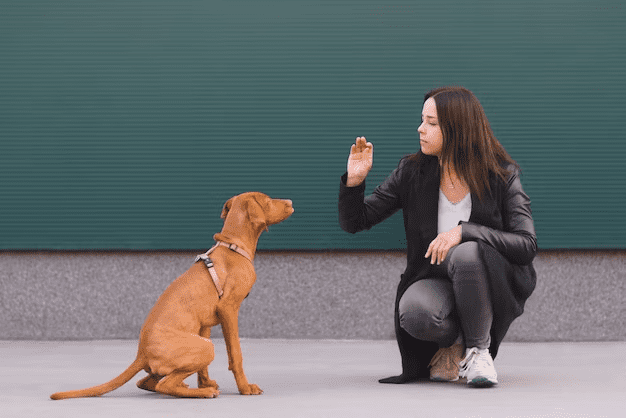Understanding Communication Dog Body Language
The body language of dogs can be a complex and nuanced form of communication. It is important to understand what your dog is trying to tell you through their body language, as it can provide valuable insight into their emotions, intentions, and needs. By learning to recognize and interpret the various cues and signals that dogs use to communicate, you can improve your relationship with your furry friend and better understand their behaviour. This article aims to provide a comprehensive overview of the body language of dogs, including common cues and signals to look out for and how to interpret them.
Barking
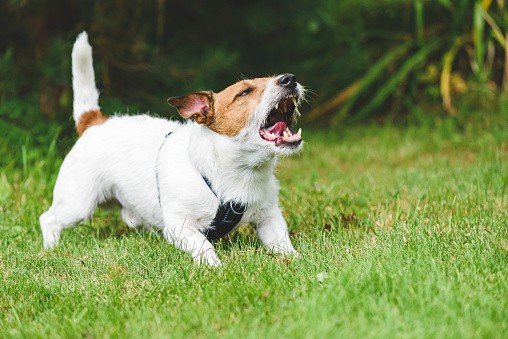
Barking is a common way for dogs to communicate and can mean anything from excitement to a warning. Dogs bark for a variety of reasons, and it can be difficult to determine the exact meaning of a dog’s bark without considering the context in which the barking is occurring. Some common reasons for barking include:
- Alerting: Dogs may bark to alert their owners to something unusual or potentially dangerous, such as the presence of an intruder or the approach of another animal.
- Attention seeking: Dogs may bark to get their owner’s attention, especially if they want something, such as food or playtime.
- Frustration or anxiety: Dogs may bark out of frustration or anxiety, particularly if they are confined or unable to interact with their surroundings.
- Boredom: Dogs may bark if they are bored or have nothing else to do.
- Playfulness: Some dogs may bark playfully when they are excited or want to play.
To determine the meaning of a dog’s bark, it can be helpful to observe the dog’s body language and consider the context in which the barking is occurring. It is also a good idea to pay attention to the tone and frequency of the barking, as this can provide clues about the dog’s emotional state. If you are concerned about your dog’s barking or are having trouble interpreting it, it may be helpful to consult a veterinarian or a professional dog trainer for guidance.
Whining

Dogs whine for a variety of reasons, and determining the meaning of a dog’s whine can be challenging because it requires understanding the context in which the whining is occurring and paying attention to the dog’s body language and behaviour. Here are a few common reasons that dogs whine.
- Attention seeking: Dogs may whine to get their owner’s attention or to get something they want, such as food or a toy.
- Anxiety or stress: Dogs may whine when they are anxious or stressed, such as when they are separated from their owner or when they are in an unfamiliar or uncomfortable situation.
- Pain or discomfort: Dogs may whine when they are in pain or discomfort, such as when they are injured or experiencing physical discomfort.
- Hunger or thirst: Dogs may whine when they are hungry or thirsty.
- Boredom: Dogs may whine when they are bored or lack mental stimulation.
To determine the meaning of a dog’s whine, it is important to pay attention to the dog’s body language and behaviour and to the context in which the whine is occurring. For example, if a dog is whining and pacing around the room, it may be because they need to go outside to relieve itself. If a dog is whining and cowering in a corner, it may be because they are anxious or stressed.
Licking

Dogs lick for a variety of reasons, and determining the meaning behind a dog’s lick can be challenging. Some possible reasons why a dog might lick include:
- Social bonding: Dogs often lick their owners and other dogs as a way of expressing affection and social bonding.
- Communication: Licking can be a way for dogs to communicate their needs or desires, such as wanting attention or food.
- Grooming: Dogs may lick themselves or other dogs as a way of grooming and maintaining cleanliness.
- Taste: Dogs have a keen sense of taste and may lick objects or people out of curiosity or to taste something that interests them.
It’s important to pay attention to your dog’s body language and behaviour when they are licking, as this can provide clues as to their motivations. If your dog is licking excessively or in a way that seems inappropriate or anxious, it may be worth consulting with a veterinarian or a professional dog trainer for further guidance.
Tail Wagging

The tail wagging of a dog can convey a variety of meanings, and it’s important to consider the context in which the tail wagging is occurring. Some possible meanings of a dog’s tail wagging include:
- Excitement: A wagging tail can often indicate that a dog is excited or happy, particularly if the wagging is accompanied by other signs of happiness such as wiggling, panting, and play bows.
- Submission: In some cases, a dog may wag its tail as a sign of submission or appeasement, particularly if the dog is in the presence of a more dominant individual.
- Anxiety: A wagging tail can sometimes indicate that a dog is anxious or stressed, particularly if the wagging is accompanied by other signs of anxiety such as panting, shaking, or whining.
- Displacement behaviour: A wagging tail can sometimes be a displacement behaviour, which is a way for a dog to cope with uncertainty or discomfort by performing a behaviour that is unrelated to the situation at hand.
It’s important to remember that each dog is an individual and may exhibit different tail-wagging behaviours for different reasons.
Rolling Over
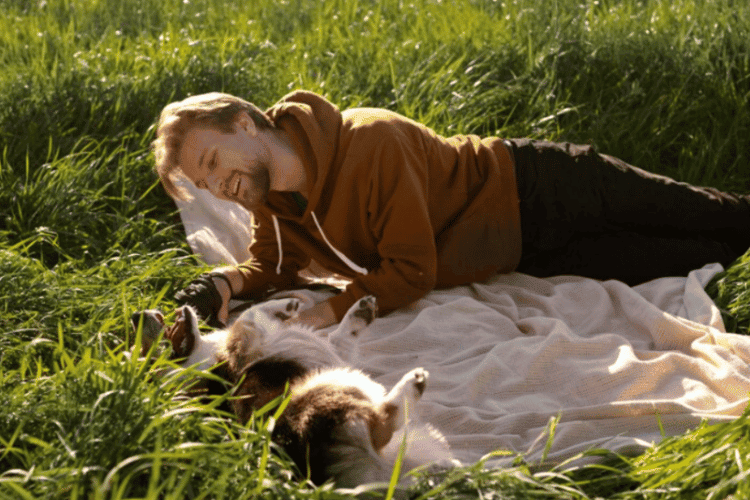
To determine the meaning of a dog rolling over, it can be helpful to consider the context in which the behaviour occurs. For example, if a dog rolls over when it is being approached by another dog or person, it may be a sign of submission. If a dog rolls over when it is being petted or groomed, it may be a sign of enjoyment or relaxation. If a dog rolls over when it is alone or when it is playing with a toy, it may be a way for the dog to scratch an itch or to play.
It is also important to consider the body language and behaviour of the dog before, during, and after it rolls over. For example, if a dog is wagging its tail, panting happily, and looking relaxed while rolling over, it is likely a sign of enjoyment or relaxation. If a dog is tense, avoiding eye contact, and avoiding interaction with others while rolling over, it may be a sign of submission.
Panting

Panting in dogs is a normal behaviour that can have a variety of meanings. Some common reasons for panting in dogs include:
- Heat regulation: Dogs pant to help regulate their body temperature, especially when they are overheating or exercising.
- Anxiety or stress: Panting can be a sign of anxiety or stress in dogs, particularly if it is accompanied by other signs of distress such as trembling or pacing.
- Pain: Panting can be a sign of pain in dogs, especially if it is accompanied by other signs of discomfort such as lethargy or reluctance to move.
- Excitement or joy: Panting can also be a sign of excitement or joy in dogs, especially if it is accompanied by other signs of enthusiasm such as wagging their tail or jumping around.
It is important to pay attention to your dog’s panting and other behaviours to determine the cause and whether or not it is a cause for concern.
Growling and Snarling

Growling is often used as a warning or threat and can indicate that a dog is feeling aggressive, anxious, or fearful. Snarling is similar to growling, but it is often more intense and may involve baring the teeth or curling the lips. If a dog is growling or snarling at you or someone else, it is important to take the behaviour seriously and not approach the dog or try to touch or pet it. Instead, try to remove yourself from the situation and give the dog some space. If the dog is growling or snarling at another animal or object, it may be best to remove the animal or object from the dog’s immediate environment to avoid a potential conflict.
Scratching

Scratching is a common behaviour in dogs, and it can have a variety of meanings. Some possible reasons why a dog might scratch include:
- Itching or irritation: If a dog is scratching, it could be because it is experiencing some sort of skin irritation or allergy.
- Marking territory: Dogs have scent glands in their paws, and they may scratch to mark their territory.
- Boredom or anxiety: Dogs may also scratch when they are feeling anxious or bored. This behaviour can be a way for the dog to cope with stress or to pass the time when it has nothing else to do.
- Grooming: Dogs may use their paws to scratch their ears or other parts of their body to remove dirt or debris.
Digging
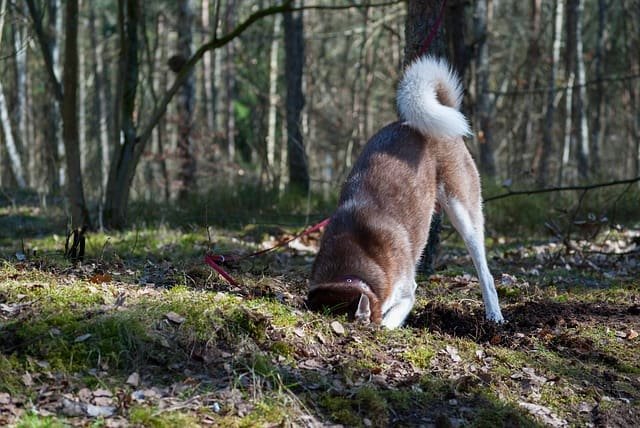
It is difficult to determine the meaning of “digging” in the context of a dog without additional information. Dogs may dig for various reasons, such as to find food, bury a bone or toy, escape from a fenced area, or simply for entertainment. If you are concerned about your dog’s digging behaviour, it may be helpful to observe the circumstances under which the digging occurs and to try to understand what might be motivating the behaviour.
Yawning

Yawning in dogs can have a variety of meanings, and it is important to consider the context in which the yawning is occurring. Here are a few possible reasons that a dog may yawn:
- Boredom or fatigue: Just like humans, dogs may yawn when they are feeling bored or tired.
- Stress or anxiety: Yawning can also be a sign of stress or anxiety in dogs. If your dog is yawning excessively or exhibiting other signs of stress, such as panting or pacing, it may be helpful to try to identify the source of the stress and take steps to address it.
- Social signalling: Yawning can also be a form of social signalling in dogs. For example, a dog may yawn in the presence of a dominant dog as a way of showing submission.
- Physical discomfort: In some cases, yawning may be a sign that a dog is experiencing physical discomfort, such as pain or illness. If your dog is yawning excessively and displaying other unusual behaviours, it is important to consult with a veterinarian to rule out any underlying health issues.
Bowing
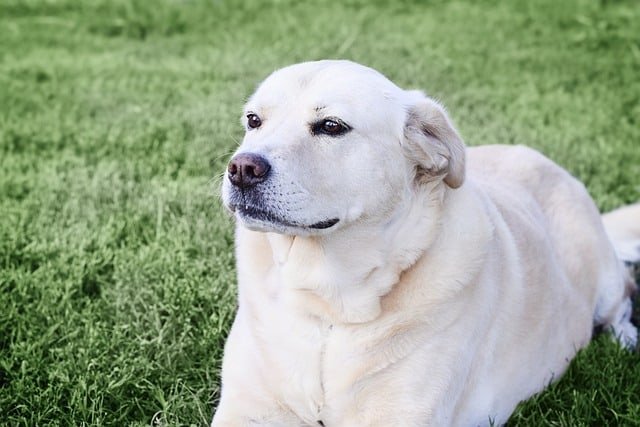
Bowing is a common body language gesture that dogs use to signal playfulness and a willingness to engage in physical activity, such as play-fighting or fetching.
To perform a bow, a dog will lower its front end while keeping its hind end and tail in the air. This posture is often accompanied by other body language cues, such as wagging the tail, panting, and making playful vocalizations. If you see your dog bowing, it is likely trying to invite you to play with it. You can respond to this invitation by engaging in a play activity that your dog enjoys, such as throwing a toy or playing chase.
Nudging
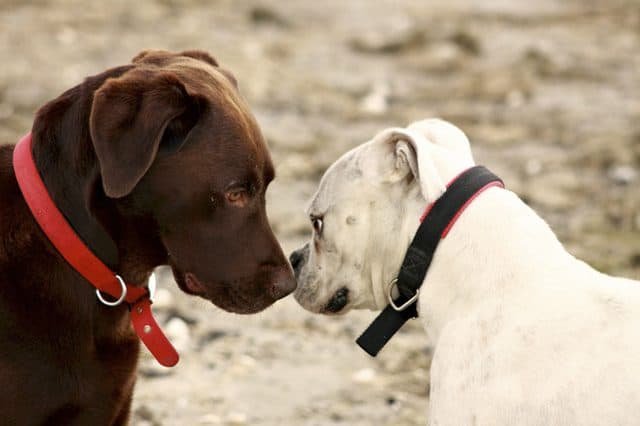
“Nudging” could refer to the act of pushing or prodding someone or something lightly with one’s elbow or another body part. If a dog is “nudging” you, it could mean that the dog is trying to get your attention or trying to communicate something to you. For example, a dog might nudge you with its nose or paw to indicate that it wants to go outside or to ask for a treat. It’s important to pay attention to your dog’s body language and behaviour to try to understand what it is trying to communicate.
Leaning
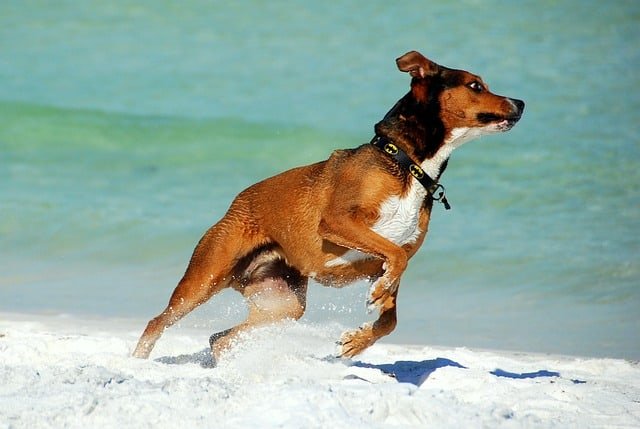
The leaning position of a dog can indicate a variety of emotions, depending on the context and other body language cues. For example, a dog that is leaning against a person or object may be seeking comfort or affection. On the other hand, a dog that is leaning forward with its head low and ears back may be displaying aggressive or dominant behavior.
Pouncing

Pouncing refers to the action of a dog leaping or jumping toward something or someone with the intent to catch or attack. To determine the specific meaning of a dog’s pouncing behavior, it can be helpful to consider the context in which it occurs and the body language and behavior of the dog leading up to and following the pounce. For example, if a dog is pouncing on a toy or another dog during play, it may be simply a playful behavior. However, if a dog is aggressively pouncing on a person, it may be a sign of aggression or a desire to dominate or control the person.
Staring

Dogs communicate through body language, vocalizations, and scent. One way that dogs communicate is through eye contact or staring. The meaning of a dog’s stare can vary depending on the context and the individual dog’s personality and behaviour. Here are a few possible interpretations of a dog’s stare:
- Dominance: Some dogs may stare as a way of trying to assert dominance over another dog or person. This is often accompanied by other dominant behaviours, such as standing tall, puffing out their chest, or blocking access to resources.
- Stress or anxiety: A dog may stare as a way of showing stress or anxiety. This may be accompanied by other signs of stress, such as panting, shaking, or hiding.
- Aggression: In some cases, a dog’s stare may be a sign of aggression. This may be accompanied by other aggressive behaviours, such as growling or baring teeth.
Herding

Herding refers to the act of guiding and directing a group of animals, typically sheep or cattle, by using trained herding dogs. The herding dog works alongside a human herder or shepherd to move the animals from one location to another, or to keep them together in a specific area. Herding dogs are highly skilled at working with and controlling the movements of the animals, using a combination of instinct, training, and verbal commands from the herder. They are also often used in livestock competitions and demonstrations to showcase their abilities.

